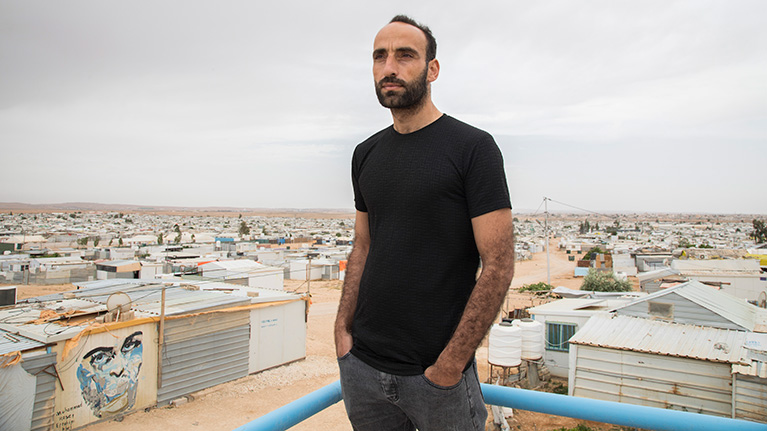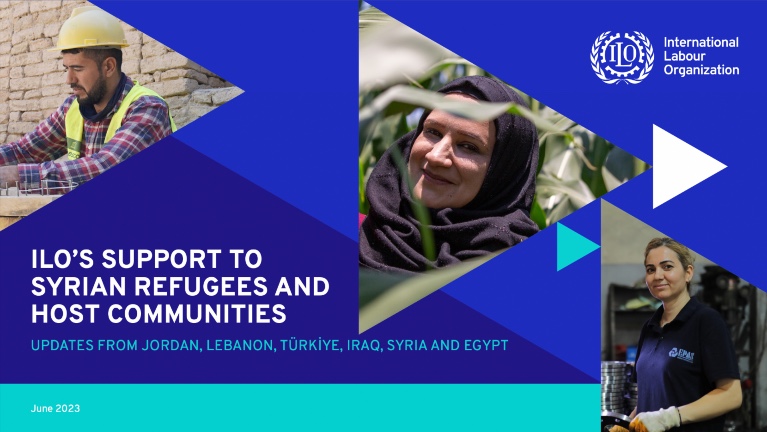ILO Response to Syrian Refugee Crisis in Lebanon

The nature of the international community’s response is also changing. As the number of Syrian refugees entering Lebanon begun to plateau in late-2014, international agencies and the Government of Lebanon have started to phase out humanitarian assistance in favour of a development-focused response targeting refugees and host community residents alike.5
The ILO Response
In order to provide an appropriate response to the Syrian refugee crisis in the Lebanese context, the ILO Regional Office for the Arab States implements a strategy that builds on existing programmes in Lebanon through three inter-related components which:
- Assess the impact of the Syrian Refugee Crisis in Lebanon on decent work;
- enhance access to employment opportunities and livelihoods in host communities; and
- combat the worst forms of child labour and unacceptable forms of work.
- Develop local economies in Northern Lebanon’s host communities. In cooperation with local stakeholders, the ILO has identified the vegetable sector for development and some 50,000 beneficiaries are estimated to benefit from ongoing Local Economic Development initiatives.
- Provide policy direction to deal with the Syrian Refugee Crisis by producing actionable evidence-based studies on the crisis in Lebanon. So far the ILO has produced seminal assessments on the magnitude and attributes or Syrian labour on the labour market in general as well as child labour in specific.
Component 1: Assess the impact of the Syrian Refugee Crisis on decent work
Evidence of the causes and consequences of any crisis are required if the response is to be effective. As such, the ILO has engaged in various research activities, both within and outside of the Organization, to provide all actors working on the Syrian refugee crisis with evidence-based information to adequately respond to the needs of refugees and host community residents. The ILO’s activities include the compilation of labour market assessments and participation in UN-wide economic and social impact assessments.
Component 2: Enhance access to employment opportunities and livelihoods in host communities
As refugees spend greater amounts of time in host communities across Lebanon, the social and economic fabric often changes too rapidly for market forces and social structures to adapt. As a result, adverse socioeconomic consequences ranging from fewer employment opportunities, lower wages, and higher consumer prices to a deterioration of social cohesion and stability begin to take hold. The ILO’s response has been to launch participatory projects and initiatives that spur Local Economic Development and add value to key local job-rich productive sectors in Lebanon.
Component 3: Combat the worst forms of child labour and unacceptable forms of work
The Syrian refugee crisis in Lebanon has already intensified economic hardship of Syrian refugee and host community residents to unprecedented levels. Increased economic vulnerability has pushed many refugees and host community residents into unacceptable forms of work, particularly child labour and its worst forms. As a result, the ILO has launched the National Action Plan to Combat the Worst Forms of Child Labour by 2016 alongside other initiatives to measure and respond to the extent of the worst forms of child labour in Lebanon.
[1] UNHCR. 2016. Syrian Regional Refugee Response Inter-Agency Information Sharing Portal. Available at: data.unhcr.org/syrianrefugees
[2] World Bank Development Indicators. Available at: databank.worldbank.org. Data employed represents estimates before adjusting for the Syrian refugee crisis.
[3] World Bank. 2013. Economic and Social Impact of the Syrian Conflict. (Poverty Reduction and Economic Management Department Middle East and North Africa Region).
[4] ILO. 2014. Assessment of the Impact of Syrian Refugees in Lebanon and their Employment Profile.
[5] Government of Lebanon and the United Nations. December 2015. Lebanon Crisis Response Plan 2015-2016 - Year Two.

